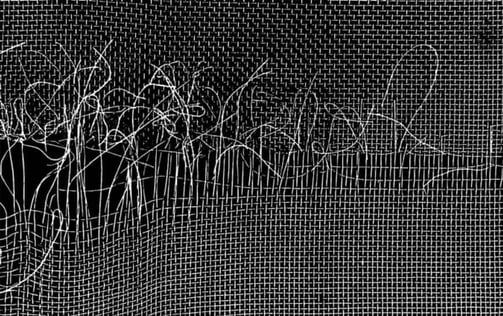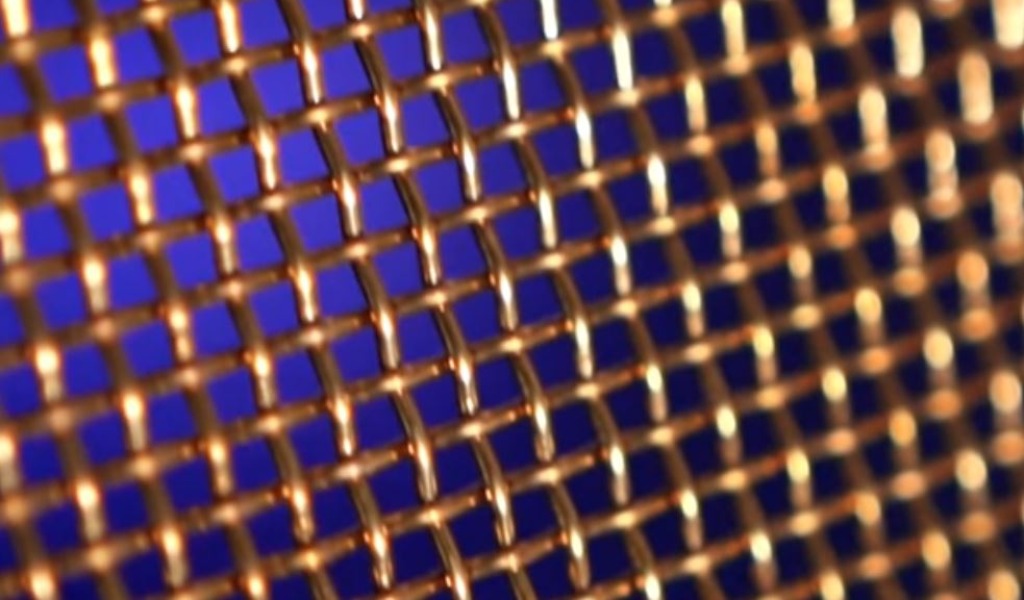Dissimilar Metal Corrosion and Woven Wire Mesh: What You Need To Know
Woven wire mesh is undeniably one of the most versatile materials available today. This versatility allows it to service a wide range of applications, from downhole tubes used to extract oil to lighting shields that protect aircraft from lightning strikes.
Now, this wide range of applications often places woven wire into systems in which there are a lot of moving parts and pieces. As these elements are fabricated from various materials, this opens the door to issues such as dissimilar metal corrosion.
This presents the question: What exactly is dissimilar metal corrosion, and what hazards can it bring to your operation?
Helping countless industries innovate their processes, W.S. Tyler strives to leverage its 150 years of woven wire experience to help customers like you craft tailor-made solutions.
And with that, we wrote the following article to help you understand everything surrounding dissimilar metal corrosion so you can work to make it a non-issue. You will learn:
- The definition of dissimilar metal corrosion
- How dissimilar metal corrosion can impact the performance of your woven wire
- The calling signs of dissimilar metal corrosion
- How you can combat dissimilar metal corrosion
What Is Dissimilar Metal Corrosion?
Dissimilar metal corrosion, sometimes referred to as galvanic corrosion, is the occurrence in which two different alloys touch one another when subjected to moisture or a corrosive atmosphere. The resulting effect is an electrochemical reaction that causes one of the metals to corrode much quicker.
The metal that doesn't corrode is thus protected.
Taking a deeper dive, the root dissimilar metal corrosion can be found in the electrochemical potential differential between the two metals. When the electrochemical potential differential is great enough, electrons flow between the two metals.
This flow of electrons causes one of the metals to corrode while the other is seemingly unaffected.
How Can Dissimilar Metal Corrosion Affect Woven Wire Mesh Performance?
Dissimilar metal corrosion can have detrimental effects on your woven wire mesh, sustainably hindering its performance. More specifically, dissimilar metal corrosion can compromise the mesh's structural integrity, reduce its lifespan, alter the size and accuracy of its pore openings, and affect its electrical and thermal conductivity.
Compromised Structural Integrity
As stated above, dissimilar metal corrosion causes one of the metals to corrode quicker than it should. When this affects your mesh, the individual wires of the weave become structurally comprised.
This, in turn, leaves your mesh susceptible to faults and failure.
Reduced Lifespan
Because dissimilar metal corrosion accelerates the corrosion of woven wire mesh, material degradation is accelerated as well. This causes the longevity of the mesh to diminish.
With a shorter lifespan, you are left with increased downtime and replacement costs.
Diminishing Pore Size and Accuracy
Dissimilar metal corrosion can cause significant degradation of the individual wires over time. As a result, the pore openings become irregular in size, thus diminishing the accuracy of your mesh.
In other words, prolonged dissimilar metal corrosion will likely have a negative impact on the performance of your mesh.
Inconsistent Electrical and Thermal Conductivity
It goes without saying that dissimilar metal corrosion alters both the physical and chemical properties of woven wire mesh. This often means that the electrical and thermal capabilities of your mesh change as well.
How To Detect Dissimilar Metal Corrosion
Dissimilar metal corrosion is associated with a handful of calling cards that you should be mindful of. The easiest and most common of these identifiers is surface corrosion.
This can be things like visual rust, rough textures, and discoloration. With that, dissimilar metal corrosion may cause woven wire mesh to lose the shiny surface that is known and often used for.

You may also find the individual wires of your mesh breaking, becoming brittle, or showing signs of structural weakening. Known for causing the material to weaken over time, these are also critical signs of dissimilar metal corrosion.
To that end, pieces of mesh appearing in the surrounding area or further down in your production line are also something you should be on the lookout for. These pieces can come in the form of wire fragments, rust particles, etc.
How To Prevent Dissimilar Metal Corrosion
There are several best practice techniques that you can implement to prevent dissimilar metal corrosion. First and foremost is to use similar metals whenever possible.
Using metals that share identical electrochemical properties, the risk of dissimilar metal corrosion is greatly reduced.
Another step you can take to prevent dissimilar metal corrosion is to apply coating or plating to the surface of your mesh. Doing so will create a protective barrier between the metals, hindering the flow of electrons and protecting the mesh from corrosive atmospheres.
Physically isolating dissimilar metals using non-conductive mediums, such as plastic washers or rubber gaskets, is another practical method used to prevent dissimilar metal corrosion. Isolating the metals prevents direct contact, thus preventing dissimilar metal corrosion.
Chemical treatments can also be used either on the mesh itself or the potentially corrosive environment. The treatments are designed to inhibit corrosive effects, working to keep dissimilar metal corrosion at bay.
Alloy Experimentation Is the Key To Combating Dissimilar Metal Corrosion
Dissimilar metal corrosion occurs when two different metal alloys come into direct contact with one another while surrounded by moisture or corrosive elements. This causes a flow of electrons that eat away at the weaker of the two alloys.
Forutnalty, using similar metals, coating/plating your woven wire, isolating the two metals, and inhibiting the corrosive effects with chemicals can all prevent dissimilar metal corrosion.
Sometimes, however, your mesh will encounter dissimilar metal corrosion, no matter how many preventive measures you implement. For this reason, you should always be open to experimenting with different alloys to ensure this form of corrosion doesn't bottleneck the efficiency of your process.
W.S. Tyler has been in the wire weaving business for over 150 years and is here to share the knowledge within our four walls to ensure you pinpoint an alloy right for you.
Read the following article to gain a better idea of what alloys you can experiment with as you continue to fine-tune the performance of your woven wire solution:
About Ronnie Brown
Ronnie is the Content Writer for W.S. Tyler and has four years of experience as a professional writer. He strives to expand his knowledge on all things particle analysis and woven wire mesh to leverage his exceptional writing and graphic design skills, creating a one-of-a-kind experience for customers.




